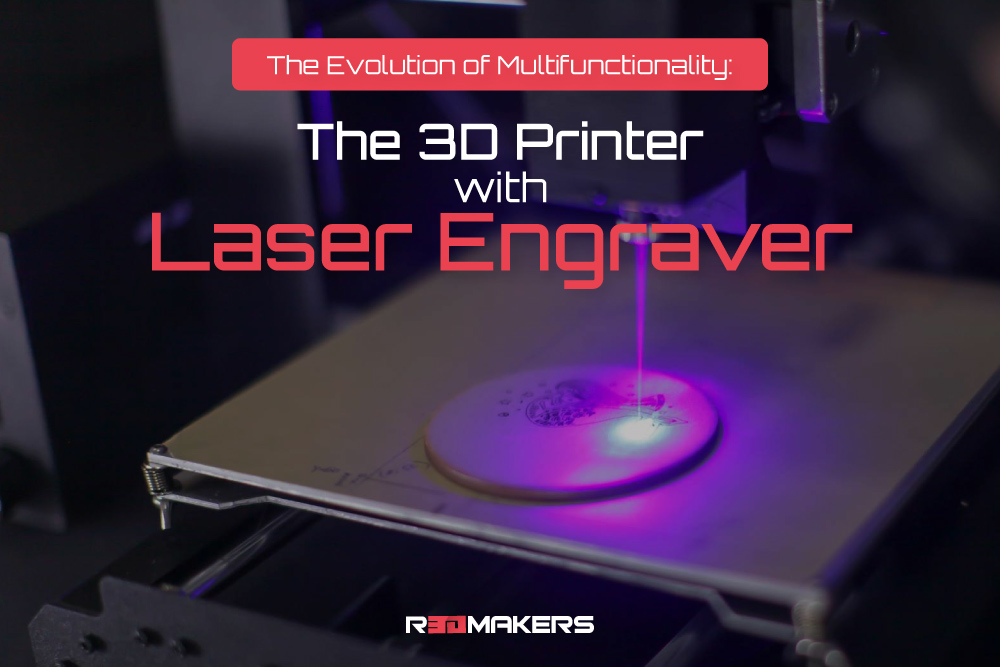The world of additive manufacturing is constantly evolving, with technological innovations providing multifunctional capabilities that once seemed impossible. Today, we find ourselves amid a revolution where a 3D printer with laser engraver is not just a dream but a reality. These devices blend the functionality of 3D printing with precision laser engraving, and in some cases, CNC machining.
This integration, often referred to as a hybrid approach, has opened up new frontiers in design and manufacturing. Not only has it broadened the horizon for professionals, but hobbyists too find the allure of these machines hard to resist. The blend of creation and customization is truly unparalleled.
Seamless Fusion: 3D Printer with Laser Engraver
The 3D printer with laser engraver, or as some may refer to it, the “laser engraver 3D printer,” is a marriage of two distinct technologies. On one side, there’s the 3D printing process, responsible for creating three-dimensional objects layer by layer from a digital file. On the other side, there’s the laser engraver, which uses a high-powered beam to engrave or cut materials with remarkable precision.
This interplay between creation and decoration leads to endless possibilities in product design. For instance, a designer can fabricate a jewelry piece and engrave intricate designs on it without switching machines. It’s a seamless process that offers unparalleled efficiency.
The Trifecta: Introducing the CNC 3D Printer with Laser Engraver
To elevate the game even further, some devices also incorporate a CNC (Computer Numerical Control) milling function. These “cnc 3d printers” or “3d printer cnc machines” introduce the world of subtractive manufacturing into the mix. Unlike 3D printing, which adds material, CNC machining removes material from a block to create a final product.
Thus, for designs that require both addition and subtraction of material, these machines offer an ideal solution. They’re particularly useful in industries like automobile or aerospace where parts might need both additive and subtractive processes. Furthermore, having these capabilities in one machine can significantly streamline workflows.
Advantages of Laser 3D Printers with Engraving Capability
The advantages of “laser 3d printers” or “3d laser printer engravers” are numerous:
Multifunctionality: Instead of purchasing separate machines, users can invest in one that offers multiple capabilities, saving both money and space.
Efficiency: Transitioning between 3D printing, laser engraving, and CNC machining is smooth and often requires minimal setup changes.
Precision: Laser engravers provide a high level of accuracy, allowing for detailed engravings on 3D printed objects.
Flexibility: From prototyping to crafting custom gifts, the applications are endless.
With such machines, industries can significantly reduce production times by eliminating the need for switching between separate devices. Plus, for small businesses and startups, the cost savings from investing in a single machine as opposed to multiple dedicated ones can be substantial. On top of that, these combined technologies allow for rapid prototyping, accelerating the design and testing phase for new products.
How to Choose the Best 3D Printer with Laser Engraver
Given the growing demand, there are now various models available in the market, each offering its unique features. When choosing the perfect fit, potential buyers should consider:
Purpose: Is the primary need 3D printer with laser engraver, engraving, or CNC machining? Or perhaps a balance of all three?
Material Compatibility: Not all machines can handle every type of filament or engraving material.
Ease of Use: For those new to these technologies, user-friendly software and interfaces can make a big difference.
Price: As with any technology, there’s a wide range when it comes to cost. Set a budget and determine which features are must-haves.
Considering reviews from other users and professionals in the field can also guide your decision. Each machine has its quirks, strengths, and weaknesses. Understanding these through firsthand accounts can ensure a better fit for your specific requirements. Moreover, post-purchase support, like customer service and availability of replacement parts, should be factored into your decision.
Conclusion
The evolution of 3D printers has brought forth machines that are more than just simple fabricators. Today’s devices, like the 3D printer with laser engraver, are a testament to how far technology has come. They allow for creativity, precision, and versatility in ways that single-purpose machines simply can’t. Such innovation is crucial as the demands of the modern world continuously evolve, requiring more adaptable solutions.
The combination of 3D printing, laser engraving, and CNC machining is symbolic of the direction in which the manufacturing world is heading – towards multifunctionality and efficiency. With such advancements, we’re poised to see even more exciting developments in the near future.
As we stand on the cusp of this technological renaissance, it becomes evident that the convergence of multiple tools into singular devices is not just about efficiency, but also about democratizing the creative process. No longer are individuals or businesses constrained by the limitations of separate machines or the high costs associated with accessing specialized equipment.
Now, budding entrepreneurs, artists, and hobbyists alike can bring their visions to life with unparalleled ease, all from a singular platform. The synergy of 3D printing, laser engraving, and CNC machining is more than just a technological marvel—it’s a beacon for the future of innovation, hinting at a world where boundaries in manufacturing and design are increasingly blurred. The future is not just about what we create, but how seamlessly and innovatively we do so.

